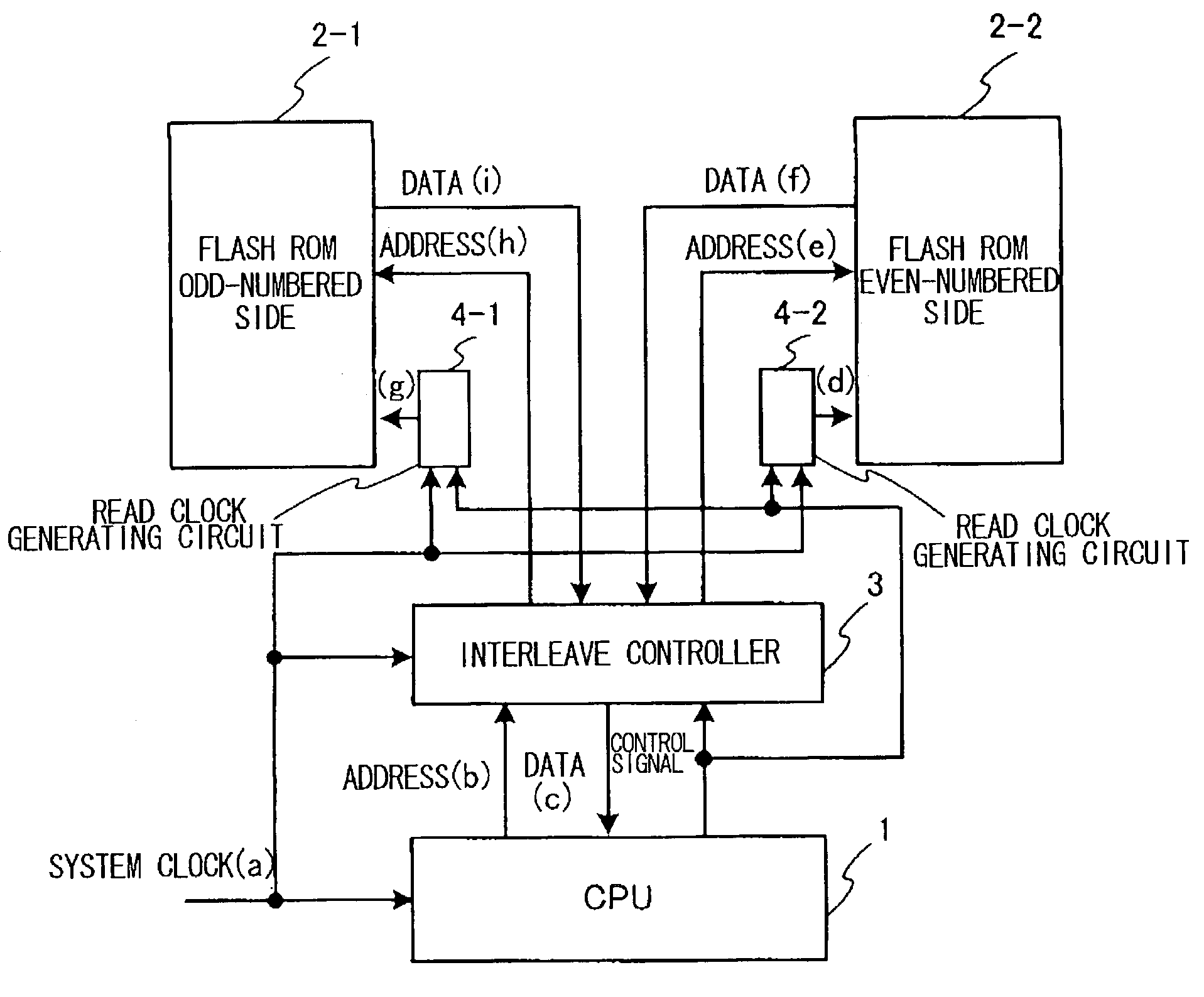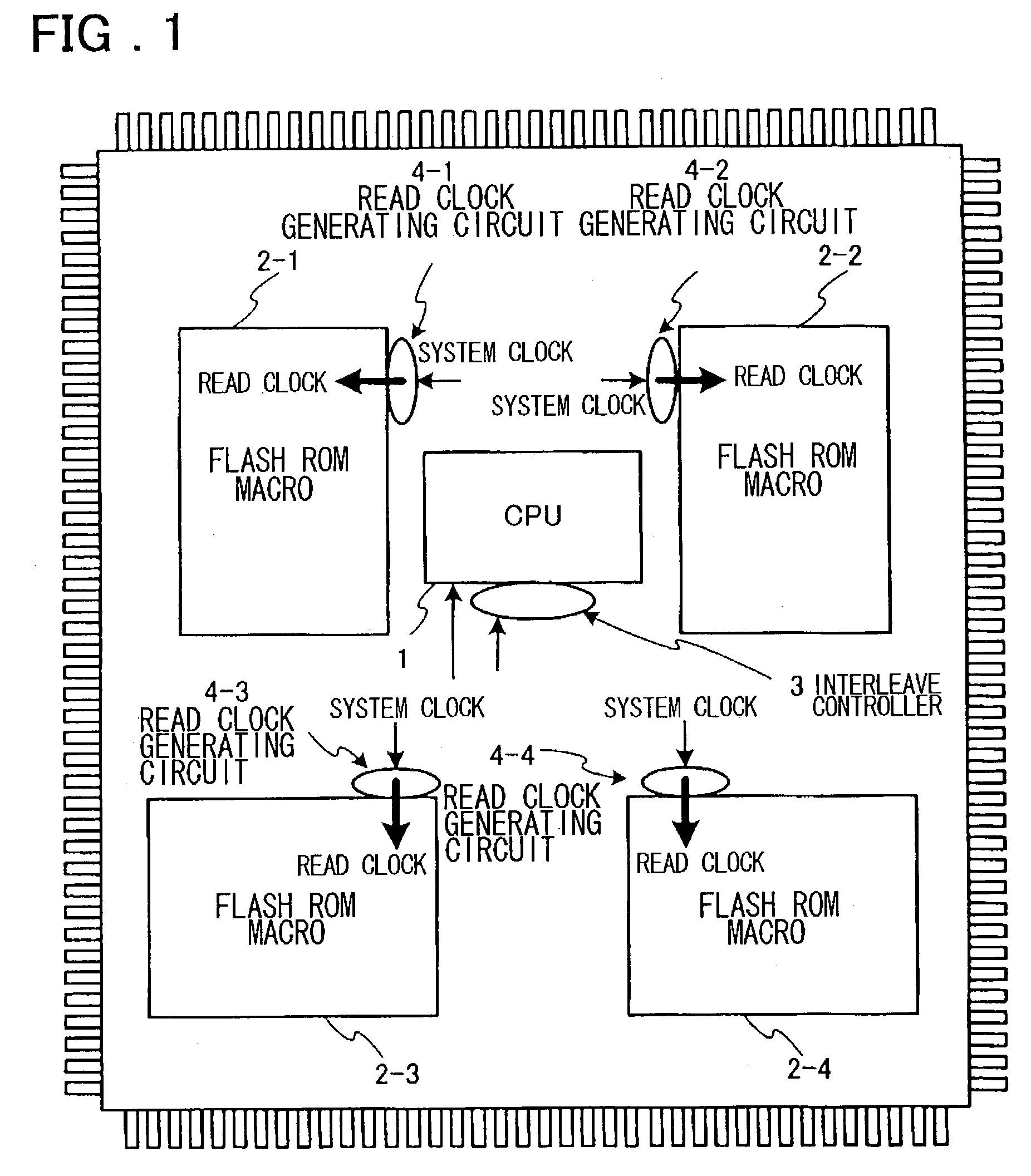Single-chip microcomputer
a single-chip microcomputer and chip technology, applied in the direction of generating/distributing signals, memory allocation/allocation/relocation, instruments, etc., can solve the problem of limiting the upper limit of the system clock that enables the cpu 1 to sample data, wiring delay, etc., to prevent the operating frequency of a single-chip microcomputer from declining in dependence on the layout of the chip
- Summary
- Abstract
- Description
- Claims
- Application Information
AI Technical Summary
Benefits of technology
Problems solved by technology
Method used
Image
Examples
Embodiment Construction
[0034] A preferred embodiment of the present invention will now be described in detail with reference to the drawings.
[0035] FIG. 1 is a diagram illustrating the circuit layout of a single-chip microcomputer according to a preferred embodiment of the present invention.
[0036] As shown in FIG. 1, this single-chip microcomputer is similar to that of the prior art in that the microcomputer has the CPU 1, the plurality of flash ROM macros 2-1 to 2-4 for storing programs, and an interleave controller 3 for exercising control when a fetch bus is interleaved. According to the present invention, however, read clock generating circuits 4-1 to 4-4 for supplying respective ones of the flash ROM macros 2-1 to 2-4 with read clocks obtained by frequency-dividing the system clock are provided in close proximity to the clock input pins of the flash ROMs 2-1 to 2-4, respectively.
[0037] As mentioned above, the interleave controller 3 runs on a system clock whose frequency is the same as that of the CP...
PUM
 Login to View More
Login to View More Abstract
Description
Claims
Application Information
 Login to View More
Login to View More - R&D
- Intellectual Property
- Life Sciences
- Materials
- Tech Scout
- Unparalleled Data Quality
- Higher Quality Content
- 60% Fewer Hallucinations
Browse by: Latest US Patents, China's latest patents, Technical Efficacy Thesaurus, Application Domain, Technology Topic, Popular Technical Reports.
© 2025 PatSnap. All rights reserved.Legal|Privacy policy|Modern Slavery Act Transparency Statement|Sitemap|About US| Contact US: help@patsnap.com



